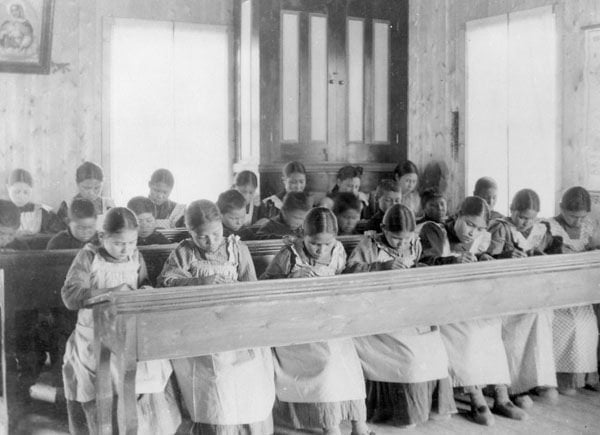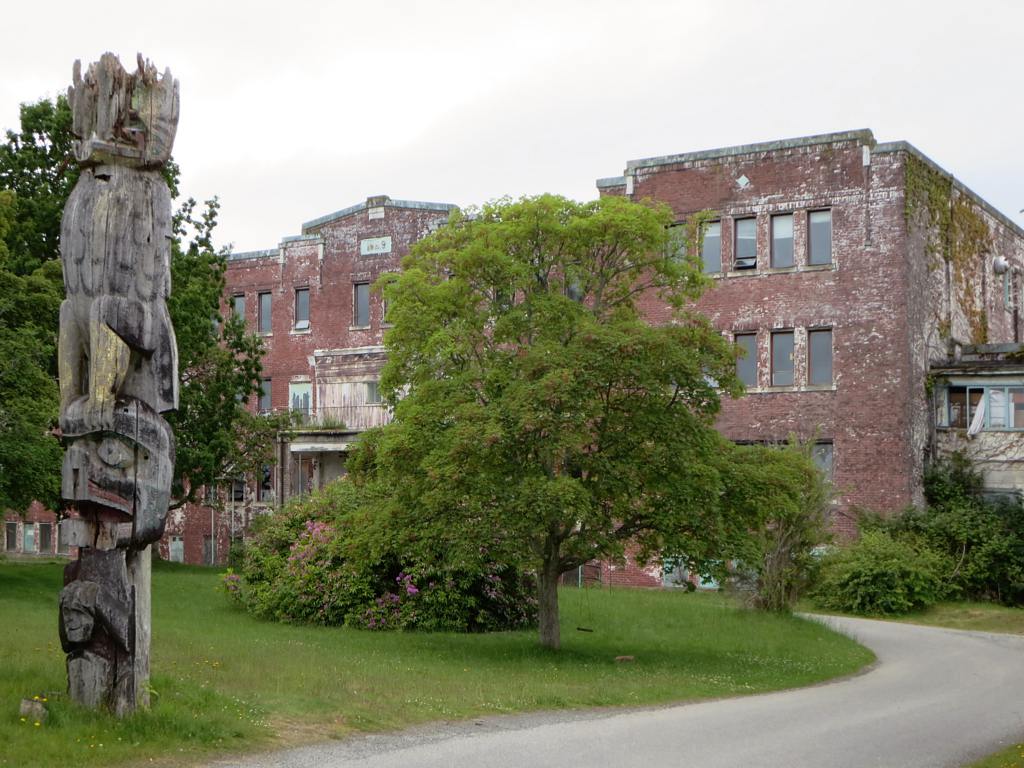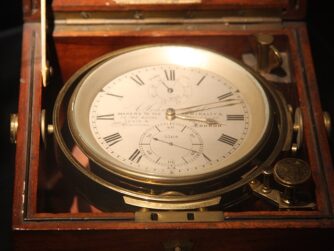Voice 1
Welcome to Spotlight. I’m Bruce Gulland.
Voice 2
And I’m Megan Nollet. Spotlight uses a special English method of broadcasting. It is easier for people to understand, no matter where in the world they live.
Voice 1
For thousands of years, powerful kingdoms and nations have extended their control over groups of people and territories. This is Colonialism. The indigenous people in many countries share a common story. Their people lived in the country – sometimes for thousands of years. They had their own culture and ways of life. Then another group of people came into their land. They took control of the land and its resources. This new group brought different ways of living. And often, the colonizing countries used force or unjust acts to extend their power over the aboriginal or indigenous people.
Voice 2
Around the world, colonialism has caused much damage. It has also caused much mistrust between colonizing and indigenous people. Even generations later, the wounds are still deep. But is it possible to heal these wounds? Does the damage have to continue? Today’s Spotlight is on the Truth and Reconciliation Commission of Canada. This organization exists to help Canadians work toward a better future – even after the many hurts of colonialism.

Voice 1
Today, Canada is a diverse country. It includes people from many different ethnic origins. However, the majority of the population has European ethnic origins. This was not always the case. Before the 1600s, indigenous tribes lived in Canada. These tribal people are now sometimes called first nations. During the 17th and 18th centuries, European powers colonized Canada. Many European immigrants moved to Canada. They quickly became the majority population. After a time, they formed a new nation called Canada. But this new nation did not fully include indigenous tribes.
Voice 2
The Canadian government did not like the differences between the majority and indigenous cultures. They called it the “Indian problem.” So, in 1857, the government of Canada made a law called the Gradual Civilization Act. This law expressed a new policy. The government wanted to force indigenous people to end their own culture. The government wanted to force the indigenous people to become part of the majority culture. Dr. Duncan Campbell Scott was the head of Canada’s Indian Affairs program from 1913 to 1932. He said,
Voice 3
“I want to get rid of the Indian problem. I do not think that the country should continue to protect a group of people who are able to stand alone. Our goal is to continue until there is not a single Indian in Canada that has not become part of the larger culture.”
Voice 1
A major way that the government tried to end indigenous culture was through the residential school system. The government created this system of schools for indigenous children. Over a period of 100 years, 150,000 students attended the schools. The residential school system separated indigenous children from their families and communities. Many of the children lived at the schools for months at a time. The schools taught children that indigenous culture was evil. They could not speak their native languages. And they used only English names.
Voice 2
The conditions at many of the schools were horrible. The schools were often too full and dirty. The schools did not have enough heating. And the students lacked medical care. Thousands of the children became sick and died. Some reports estimate that in some schools 30-60 percent of children died. Some of these children were buried at the schools in group burial sites. No one told their parents.

Voice 1
Different Christian churches managed most of the residential schools. And at many of these schools religious leaders hurt the children. Leaders hit children and used extreme methods of punishment. Some priests sexually abused the children. They forced the children to perform sexual acts. Many, many children were emotionally and physically damaged in this way.
Voice 2
The history of the residential school system became a story of shame for Canada. For many years, indigenous and non-indigenous Canadians wanted the government to admit it had been wrong. In 2006, the government of Canada made a legal agreement with indigenous tribes. The government agreed to give almost two billion dollars to individual people who survived the residential schools.
Voice 1
But money alone could not solve the hurt of Canada’s negative policies. There were too many victims and too much damage. So, the lawsuit also included a decision to create a Truth and Reconciliation Commission, or a TRC. A TRC is a kind of public court. The public can hear about crimes, address the harm, and look to the future. The Canadian TRC was established in 2008.
Voice 2
The TRC held events in major cities all across Canada. At every event, the TRC educated people about what happened. People could walk through educational displays. These displays showed historical objects from the residential schools and indigenous culture. People could also attend classes on the history of the residential schools.
Voice 1
One of the main parts of the TRC happened when people gathered together into listening circles. Non- indigenous and indigenous Canadians listened to the stories of people who experienced the residential school system. There were opportunities to ask and answer questions. These listening circles helped indigenous and non-indigenous people understand each other better.
Voice 2
The TRC also provided places to discuss difficult questions. Questions like ‘What kind of attitudes or thinking caused the residential school systems?’ ‘Do people still think this way today?’ ‘Do current laws support such attitudes?’ These discussions could help indigenous and non-indigenous people work together to change Canada’s current culture and laws.
Voice 1
The TRC also created the chance for forgiveness and new beginnings. When the TRC was established, Canadian Prime Minister Stephen Harper made an official apology to Canada’s indigenous tribes. For the first time, the head of Canada accepted blame and expressed regret for what happened. During TRC events, government and community leaders also offered apologies and asked the indigenous communities for forgiveness. They also declared official promises to the tribes for the future.
Voice 2
The TRC offices officially closed in 2015. They had collected stories from survivors. They produced reports and resources for students and teachers. And the work of the TRC continues in a new organization. It is called the National Centre for Truth and Reconciliation, or the NCTR. The NCTR says it is a place for learning. They promise to keep the truths of the residential schools safe and honored.

Voice 1
And indeed, this issue continues even today. First nations people continue to find remains of children at the schools. In May and June of 2021 three more burial sites were found near residential schools. How can people move forward with a history like this? How can people continue the work of reconciliation?
Voice 2
Don Klaassen is a Canadian who works for reconciliation between indigenous and non-indigenous people. His ancestors colonized farmland in British Columbia, Canada. In many ways, his life was built on government acts that were not fair to indigenous people.
Voice 1
Klaassen began his reconciliation work by building a relationship with an indigenous man. This man was named Isadore Charters. Charters is a survivor of the residential schools. The two men became good friends. They worked together to create an educational class for the TRC. They also made a film about Charters’ story. Klassen and Charters believe that the TRC provides a base for building new relationships. In their film, Charters says,
Voice 4
“We have got to work together. Now that you know the story, you can help by passing the story on, by walking with us.”
Voice 2
In a future Spotlight program we will look at the story of Isadore Charters. Listen and learn about how he found healing from his residential school experience.
Voice 1
Have you ever heard of these residential schools? Has your country ever had to deal with a difficult situation? How did people find peace? Tell us what you think. You can leave a comment on our website. Or email us at contact@spotlightenglish.com. You can also find us on YouTube, Facebook, Instagram, and Twitter.
Voice 2
The writer of this program was Jennifer Hawkins. All quotes were adapted and voiced by Spotlight. You can listen to this program again, and read it, on the internet at www.spotlightenglish.com. This program is called, “Truth and Reconciliation for Canada.”
Voice 1
Visit our website to download our free official app for Android and Apple devices. We hope you can join us again for the next Spotlight program. Goodbye!
Question:
How has your country found peace after bad times in its past? Is forgiveness possible?








Our ancestors fought relentlessly to protect our national sovereignty. We learned about the colonial period through history and many other recorded documents. The heroic history of the nation is our pride.
I,m an immigrant, I think everyone has the right to look for a better place to live, but without abuse. Taking control and wanting to change the ways of those who were first is no right. What made me angry is the sexual abuse of children and there has always been religious involvement. They still haven’t invented a word to qualify these people.
People in my contrary created a large group to fight the people who were cussing harm in my state , and my government was helping this group to achieve complete peace in the state , and my government could act with the people who were the cause of the sabotage
Indeed , after some time, the life has passed and every citizens can find peace when he walks down the street
Terrible and shameful truths that cannot and must not be forgotten. Thanks Spotlight.
Everywhere immigrant’s story is alway pitiful. I feel so lucky when i was born in a time of peace. Pray for everyone in the world.
My country has found peace after bad times in its past by fruitful dialogue among different groups of people in my country. Forgiveness is possible by cooperation.